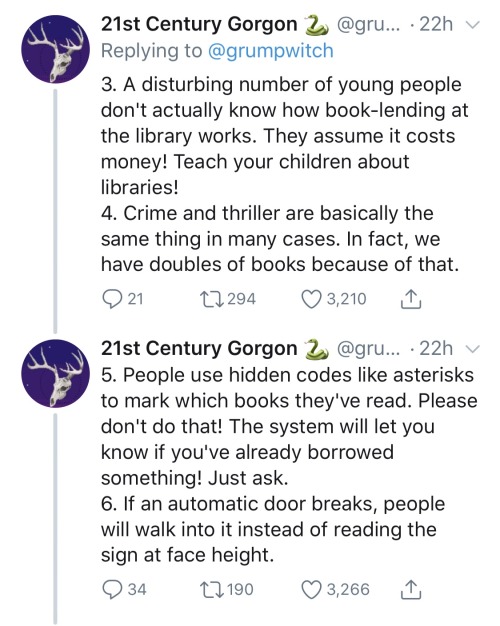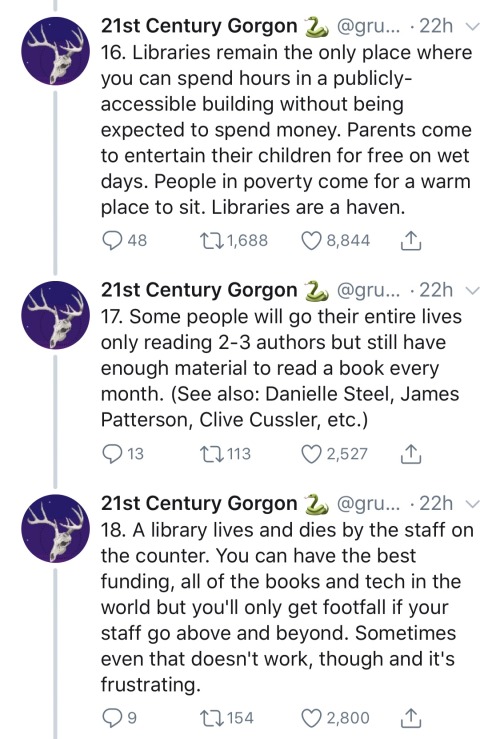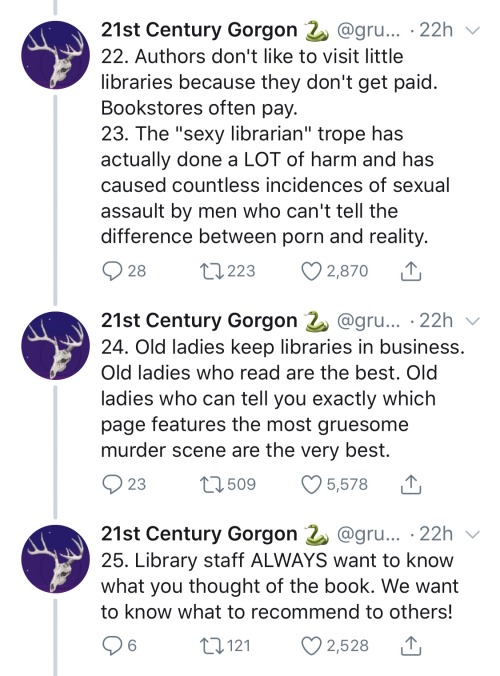The Guard Dog

The Guard Dog
A non-fandom collage! This collage was inspired by the guard dog/I'll protect you with my life/devoted follower vibe.
More Posts from Thekingsbutler and Others

I moved last year to a new state and the isolation was getting to me, so I joined the writer's group at the local library. I love it so much, it keeps me connected to folks AND helps me with my writing.
Support libraries.









Seeing the Invisible Universe

This computer-simulated image shows a supermassive black hole at the core of a galaxy. The black region in the center represents the black hole’s event horizon, beyond which no light can escape the massive object’s gravitational grip. The black hole’s powerful gravity distorts space around it like a funhouse mirror. Light from background stars is stretched and smeared as it skims by the black hole. You might wonder — if this Tumblr post is about invisible things, what’s with all the pictures? Even though we can’t see these things with our eyes or even our telescopes, we can still learn about them by studying how they affect their surroundings. Then, we can use what we know to make visualizations that represent our understanding.
When you think of the invisible, you might first picture something fantastical like a magic Ring or Wonder Woman’s airplane, but invisible things surround us every day. Read on to learn about seven of our favorite invisible things in the universe!
1. Black Holes

This animation illustrates what happens when an unlucky star strays too close to a monster black hole. Gravitational forces create intense tides that break the star apart into a stream of gas. The trailing part of the stream escapes the system, while the leading part swings back around, surrounding the black hole with a disk of debris. A powerful jet can also form. This cataclysmic phenomenon is called a tidal disruption event.
You know ‘em, and we love ‘em. Black holes are balls of matter packed so tight that their gravity allows nothing — not even light — to escape. Most black holes form when heavy stars collapse under their own weight, crushing their mass to a theoretical singular point of infinite density.
Although they don’t reflect or emit light, we know black holes exist because they influence the environment around them — like tugging on star orbits. Black holes distort space-time, warping the path light travels through, so scientists can also identify black holes by noticing tiny changes in star brightness or position.
2. Dark Matter

A simulation of dark matter forming large-scale structure due to gravity.
What do you call something that doesn’t interact with light, has a gravitational pull, and outnumbers all the visible stuff in the universe by five times? Scientists went with “dark matter,” and they think it's the backbone of our universe’s large-scale structure. We don’t know what dark matter is — we just know it's nothing we already understand.
We know about dark matter because of its gravitational effects on galaxies and galaxy clusters — observations of how they move tell us there must be something there that we can’t see. Like black holes, we can also see light bend as dark matter’s mass warps space-time.
3. Dark Energy

Animation showing a graph of the universe’s expansion over time. While cosmic expansion slowed following the end of inflation, it began picking up the pace around 5 billion years ago. Scientists still aren’t sure why.
No one knows what dark energy is either — just that it’s pushing our universe to expand faster and faster. Some potential theories include an ever-present energy, a defect in the universe’s fabric, or a flaw in our understanding of gravity.
Scientists previously thought that all the universe’s mass would gravitationally attract, slowing its expansion over time. But when they noticed distant galaxies moving away from us faster than expected, researchers knew something was beating gravity on cosmic scales. After further investigation, scientists found traces of dark energy’s influence everywhere — from large-scale structure to the background radiation that permeates the universe.
4. Gravitational Waves

Two black holes orbit each other and generate space-time ripples called gravitational waves in this animation.
Like the ripples in a pond, the most extreme events in the universe — such as black hole mergers — send waves through the fabric of space-time. All moving masses can create gravitational waves, but they are usually so small and weak that we can only detect those caused by massive collisions. Even then they only cause infinitesimal changes in space-time by the time they reach us. Scientists use lasers, like the ground-based LIGO (Laser Interferometer Gravitational-Wave Observatory) to detect this precise change. They also watch pulsar timing, like cosmic clocks, to catch tiny timing differences caused by gravitational waves.
This animation shows gamma rays (magenta), the most energetic form of light, and elusive particles called neutrinos (gray) formed in the jet of an active galaxy far, far away. The emission traveled for about 4 billion years before reaching Earth. On Sept. 22, 2017, the IceCube Neutrino Observatory at the South Pole detected the arrival of a single high-energy neutrino. NASA’s Fermi Gamma-ray Space Telescope showed that the source was a black-hole-powered galaxy named TXS 0506+056, which at the time of the detection was producing the strongest gamma-ray activity Fermi had seen from it in a decade of observations.
5. Neutrinos

This animation shows gamma rays (magenta), the most energetic form of light, and elusive particles called neutrinos (gray) formed in the jet of an active galaxy far, far away. The emission traveled for about 4 billion years before reaching Earth. On Sept. 22, 2017, the IceCube Neutrino Observatory at the South Pole detected the arrival of a single high-energy neutrino. NASA’s Fermi Gamma-ray Space Telescope showed that the source was a black-hole-powered galaxy named TXS 0506+056, which at the time of the detection was producing the strongest gamma-ray activity Fermi had seen from it in a decade of observations.
Because only gravity and the weak force affect neutrinos, they don’t easily interact with other matter — hundreds of trillions of these tiny, uncharged particles pass through you every second! Neutrinos come from unstable atom decay all around us, from nuclear reactions in the Sun to exploding stars, black holes, and even bananas.
Scientists theoretically predicted neutrinos, but we know they actually exist because, like black holes, they sometimes influence their surroundings. The National Science Foundation’s IceCube Neutrino Observatory detects when neutrinos interact with other subatomic particles in ice via the weak force.
6. Cosmic Rays

This animation illustrates cosmic ray particles striking Earth's atmosphere and creating showers of particles.
Every day, trillions of cosmic rays pelt Earth’s atmosphere, careening in at nearly light-speed — mostly from outside our solar system. Magnetic fields knock these tiny charged particles around space until we can hardly tell where they came from, but we think high energy events like supernovae can accelerate them. Earth’s atmosphere and magnetic field protect us from cosmic rays, meaning few actually make it to the ground.
Though we don’t see the cosmic rays that make it to the ground, they tamper with equipment, showing up as radiation or as “bright” dots that come and go between pictures on some digital cameras. Cosmic rays can harm astronauts in space, so there are plenty of precautions to protect and monitor them.
7. (Most) Electromagnetic Radiation

The electromagnetic spectrum is the name we use when we talk about different types of light as a group. The parts of the electromagnetic spectrum, arranged from highest to lowest energy are: gamma rays, X-rays, ultraviolet light, visible light, infrared light, microwaves, and radio waves. All the parts of the electromagnetic spectrum are the same thing — radiation. Radiation is made up of a stream of photons — particles without mass that move in a wave pattern all at the same speed, the speed of light. Each photon contains a certain amount of energy.
The light that we see is a small slice of the electromagnetic spectrum, which spans many wavelengths. We frequently use different wavelengths of light — from radios to airport security scanners and telescopes.
Visible light makes it possible for many of us to perceive the universe every day, but this range of light is just 0.0035 percent of the entire spectrum. With this in mind, it seems that we live in a universe that’s more invisible than not! NASA missions like NASA's Fermi, James Webb, and Nancy Grace Roman space telescopes will continue to uncloak the cosmos and answer some of science’s most mysterious questions.
Make sure to follow us on Tumblr for your regular dose of space!

Fine Things
Collage for Ed and Stede from Our Flag Means Death.
does anybody remember fun. Nobody even remembers fun. anymore, give me a second I— I need to get my story straight my friends are in the bathroom getting higher than the empire state my lover she's waiting for me just across the bar my seats been taken by some sun glasses asking bout a scar but I know I gave it to you months ago I know you're trying to forget but between the drinks and subtle things the holes in my apologies you know I'm trying hard to take it back so if by the time the bar closes and you feel like falling down I'll carry you home
So I see you all are exhausted by streaming services effectively recreating cable. I see you’re all tired of ads. Pirating is a great alternative, but I have another fantastic option for you all!

I live in Seattle. And in Seattle we have America’s largest physical media store, Scarecrow Video. They are a non-profit that has pretty much any film or tv show you can imagine. Like, everything. So much so that one of our local cinemas does a program with them called “Unstreamable” where they show a film from Scarecrow’a archive that you can’t access anywhere online. It’s a bit overwhelming to go to their store, which is two levels of every program under the sun.

ANYWAY, I bring this up because they recently started a Rent-by-Mail program. It’s pretty similar to what Netflix used to do. You can rent up to six titles (barring their super rare stuff and pornos) and they will ship it to you, then you return it in the included pre-paid envelope.
Why does this rock? Sure, you still have to pay money, BUT you are supporting a non-profit that is dedicated to preserving media instead of some corporation looking for endless profit. They can also expand your palette with their vast selection. And if you have a favorite piece of media, you never have to worry about it disappearing! All their stuff is there in perpetuity.
So this is all to say, now that Scarecrow has expanded their reach beyond the Greater Seattle Area, I implore you to check them out. If you don’t want to rent right now, the could always use donations to keep them afloat.
You can check out their catalogue HERE!

So I just saw a post by a random personal blog that said “don’t follow me if we never even had a conversation before” and?????? Not to be rude but literally what the fuck??????????
I’ve had people (non-pornbots) try to strike conversation out of nowhere in my DMs recently, and now I’m wondering if they were doing that because they wanted to follow me and thought they needed to interact first. I feel compelled to say, just in case, that it’s totally okay to follow this blog (or my side blog, for that matter) even if we’ve never talked before.
Also, I’m legit confused. Is this how follow culture works right now? It was worded like it’s common sense but is that really a thing?
Something thats always bugged me about dnd and pathfinder’s gods is that… they are basically monotheism in polytheism wrapping AND there is no actual religion present. The lore is so obsessed with these beings as people with their extensive histories and active presence in the setting that they completely forgot to actually create religions surrounding them.
What does casual worship look like for any of these gods? Could you tell me? What does prayer actually look like? Is there specific times of the day in which you must pray for certain gods? Is there certain attire you must wear to show your faith? Are there certain foods you cannot eat? Are there certain foods that are elevated above the rest for your faith? What kind of offerings are expected everyday? Do they expect offerings everyday or on a certain day of the week? Do they expect physical offerings at all? Do they ask for sacrifices of material goods, animals, people? Why? Why do you worship this deity? How does that actually affect ur daily life? How is worship different for a cleric, paladin, priest, or casual believer? What kinds of swears, curses, exclamations, etc are associated with this religion? Are there certain activities that are banned within your religion? How strictly does the religion police its worshiper’s actions? What kind of philosophies do they preach or disavow?
These and many more are the elements that form real world religions and are absent in most fantasy “religions” including popular ttrpgs. I cant even call these faiths religions because they really arent. One god in these settings should have 20 different religions built around them that all disagree on how the god’s domain, history, and personality should be interpreted. Maybe 2 or 4 of them would be main stream but there should be more than just one monolithic faith surrounding a god. And stop calling it polytheism. Please for the love of everything. Polytheism is a type of religion that worships multiple gods at once. Faith in dnd and pathfinder is largely monotheistic because the players choose one god they like and ignore all the rest.
I am not trying to put the responsibility of creating all these religions on gms - im pointing out that the creators of these ttrpgs did all of us a huge disservice. Religion is such an expansive and fascinating and diverse concept in the real world that it infuriates me to see it reduced to choosing a god you like and thats it. And im agnostic irl!
I was talking to my cowriter about this for the lore in my ttrpg and it got me really rilled up XD Religion can be beautiful or terrible or a mixture of both. It can save people from the world’s darkness or bring out their own inner darkness. It deserves more than a cliff-notes table of deities to choose from and half baked lore about the gods without examining the actual faith they inspire in others :/
I am exceptionally lucky in that my parents never hit me, grounded me, confiscated my things, banned me from my hobbies or threatened any of these actions to make me behave as a kid. as an adult it has made me realise how very very long a road most people have to traverse before they can take a statement like 'no rule that must be enforced by threat is legitimate' seriously.
-
 happinessisntfun reblogged this · 7 months ago
happinessisntfun reblogged this · 7 months ago -
 happinessisntfun liked this · 7 months ago
happinessisntfun liked this · 7 months ago -
 transexualcow reblogged this · 7 months ago
transexualcow reblogged this · 7 months ago -
 browesishu liked this · 7 months ago
browesishu liked this · 7 months ago -
 sassy-cass-16 liked this · 7 months ago
sassy-cass-16 liked this · 7 months ago -
 thekingsbutler reblogged this · 7 months ago
thekingsbutler reblogged this · 7 months ago

Perpetually confused. Writing, collaging, others. All Pronouns. 20s.Started this for Ao3 stuff but let's see how it goes.https://archiveofourown.org/users/ButlerOfKings
140 posts